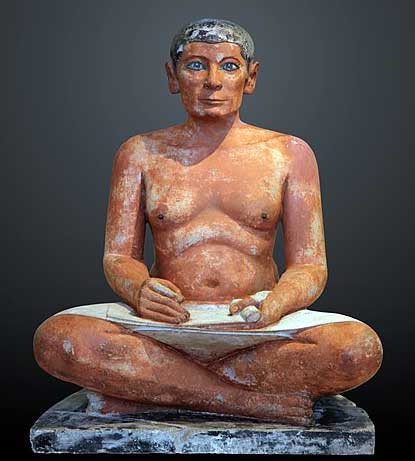AFRICAN CARTOGRAPHY
A manuscript topographic map of the Bamun Kingdom in Cameroon made in 1920 on the orders of King Njoya. This map is the first to reflect the way the Bamum people themselves saw their land - a precious example of an African map made by African cartographers. 1/
A manuscript topographic map of the Bamun Kingdom in Cameroon made in 1920 on the orders of King Njoya. This map is the first to reflect the way the Bamum people themselves saw their land - a precious example of an African map made by African cartographers. 1/

Officially made for a better management of land disputes, this map also materializes the Bamun sovereignty of King Njoya in the face of a hostile colonial administration. This map runs West to East and it stands at the crossroads of two different perceptions of space. 2/ 

Land surveys were made in 1912 and again in 1920, by about 20 people led by the King himself. This team invented its own topographical standards to identify villages, marketplaces and boundaries. The titling is in the Bamum script, invented by King Njoya himself, throughout. 3/ 

This map replicates a quadrangular perception in shape of the inhabited territory, organized around the palace, located in the heart of an oversized capital. 4/ 

This map and a near identical one acquired in 2021 by the Library of Congress from the same original source (the heirs of the artist Suzanne Truitard, who lived in Foumban in the 1920s and early 1930s) are amongst the very few surviving maps of the Bamum Kingdom. 5/ 

To construct the map, Njoya organized a topographic survey led by 20 members of his entourage. It was organized into specialized groups: bush clearing crews, surveying teams who recorded their observations in notebooks, and servants who waited on the king and his surveyors. 6/ 

The king's twenty topographers supervised and checked the work of the survey crews. Dugast and Jeffreys interviewed the principal leader of the survey team, Nji Mama, who estimated that sixty individuals participated in the survey. 7/
Work began in early April 1912 and continued for close to two months. At each village in the kingdom, a guide would accompany a survey team to report the extent of village boundaries and rural domains, the names of local streams and mountains, and other pertinent information. 8/ 

Distances were calculated by using watches and noting the time it took to walk from one stop to the next. Njoya halted the survey at the beginning of the rainy season when travel became increasingly difficult. 9/
The expedition notebook kept by Nji Mama indicated that the topographers had made thirty stops over fifty-two days and had surveyed two-thirds of the kingdom. 10/ 

This Bamum map is notable for its east-west orientation, the exaggerated size of the royal capital (and its placement at its center). It shows rivers in purple, mountains in green, and two purple and red disks signifying the rising (bottom disk) and setting sun (top disk). 11/ 

Njoya aimed to consolidate his control over Bamum through careful collaboration with the colonial authorities. His map promoted this goal by creating a sense of unity or oneness, emphasized graphically by framing the kingdom within an extraordinarily symmetrical river system. 12/
Hundreds of place-names are found along the edge of the kingdom, suggesting that the king's topographers essentially delimited the territory of Bamum by walking its perimeter. 13/
The exaggerated scale of the capital Foumban - location of Njoya's palace - is an emphatic statement that draws the viewer's attention to the political heart of the kingdom. 14/ 

Njoya understood the power of maps, especially their value in diplomatic affairs. This map is the product of a political transition in which Njoya used his mapmaking skills to safeguard the territorial claims of Bamum, and to preserve his role as its traditional sovereign. 15/ 

I should add that this Twitter thread is the first time this Bamum map has been placed online, and as far as I know, the very similar copy purchased in 2021 by the @libraryofcon has not yet been digitized. 16/
Recommended further reading:
Thomas Bassett's chapter "Indigenous Mapmaking in Intertropical Africa" in the History of Cartography, Vol II, Book 3: press.uchicago.edu/books/HOC/HOC_…
and Alexandra Loumpet-Galitzine's "La Cartographie du Roi Njoya", available here:
lecfc.fr/new/articles/2…
Thomas Bassett's chapter "Indigenous Mapmaking in Intertropical Africa" in the History of Cartography, Vol II, Book 3: press.uchicago.edu/books/HOC/HOC_…
and Alexandra Loumpet-Galitzine's "La Cartographie du Roi Njoya", available here:
lecfc.fr/new/articles/2…
• • •
Missing some Tweet in this thread? You can try to
force a refresh


















